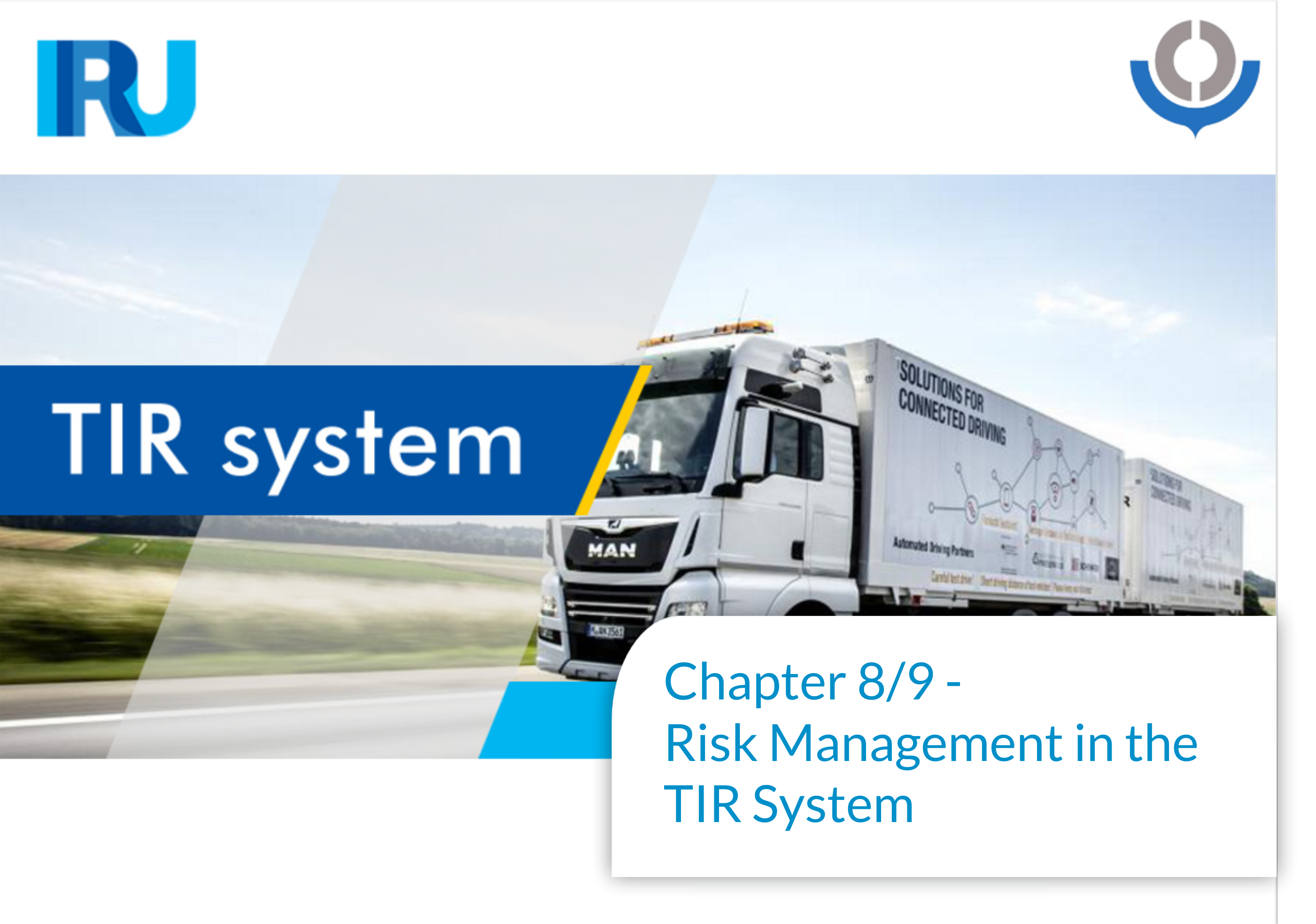
The use of a harmonised international customs document – the TIR Carnet – is a basic principle of the TIR System. This unit discusses the fields of the TIR Carnet and the rules for filling them out. It makes use of a step by step process in order to explain a TIR transport from A to Z – from receiving a TIR Carnet, to the journey itself, and through to the return of the TIR Carnet to the association and ultimately to the IRU. A quiz is also included to test your knowledge.

This unit discusses the actions to be taken by transporters and Customs authorities in the event of incidents and accidents. It also provides a step by step approach to the fields that need to be completed in the TIR Carnet’s Certified Report. A quiz is also included to test your knowledge.

This unit presents the multiple risk management tools to protect the integrity of the TIR system that IRU has developed. These tools include SafeTIR, AskTIR and TIR-EPD, software designed to effectively manage risk by the actors of the TIR system. A quiz is also included to test your knowledge.

Should a TIR irregularity lead to a Customs claim for duties and taxes, there are particular practices that have to be followed. This unit will take you through a scenario to illustrate the claims process from the irregularity to the resolution of the Customs debt. A quiz is also included to test your knowledge.

This unit will increase your understanding of the roles of the parties (called ‘actors’) who take part in the TIR system. A quiz is also included to test your knowledge.

This unit explains the administrative structure of the TIR system. It lists the different administrative bodies that are involved in the organisation and functioning of the TIR system. A quiz is also included to test your knowledge.

This unit covers intermodal TIR transports and describes situations where a TIR transit movement may be suspended. It also covers details of goods that cannot be transported under cover of a TIR Carnet and other restrictions on the use of the TIR System. A quiz is also included to test your knowledge.

This unit explains how movements under the TIR System can begin, end or be in transit through Community or Common Transit countries, and explains the use and purpose of the systems available in the EU. A quiz is also included to test your knowledge.

“By the end of this lesson you should be able to:
– Explain the history behind SAFE and its evolution from 2002 to the present day
– State its fundamental objective and associated principles
– Name the four core elements of SAFE
– Name the three pillars and provide a basic rationale for each one
– List at least five key benefits of SAFE for all stakeholders in international trade
– Describe the constituent parts of the SAFE Package.
A quiz is also included to test your knowledge.”

“By the end of this lesson you should be able to:
– Explain how Customs administrations can work cooperatively using international standards to maximize the security and facilitation of the international trade supply chain
– List the legal, procedural, technological and administrative principles underlying the C2C concept
– State the pivotal role of advanced electronic information to enable more effective risk assessment
– Identify the kinds of modern technology that Customs will be required to use to perform NII
– List the eleven standards within Pillar One and be able to explain the key features of each.
A quiz is also included to test your knowledge.”









